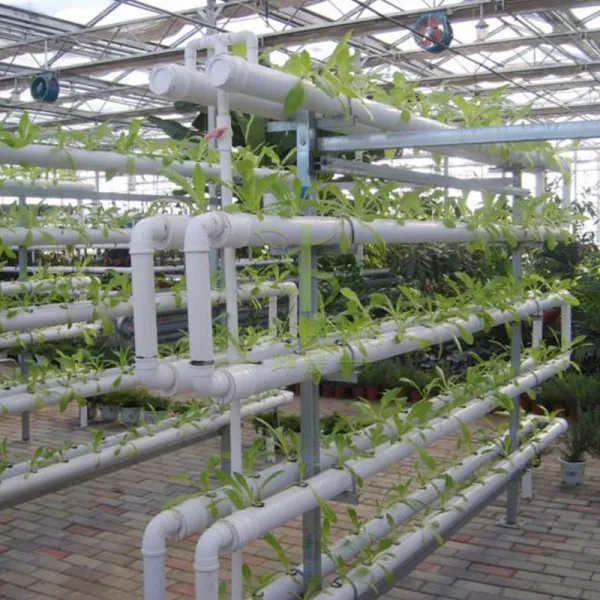Why choose a hydroponic greenhouse?
Mar. 21, 2024
A greenhouse is a man-made facility usually used to grow plants and provide an ideal growing environment. There are usually temperature, humidity, light and other control equipment inside the greenhouse, which can simulate various climatic conditions so that plants can grow in different seasons. The exterior of a greenhouse is usually made of a clear material, such as glass or plastic, to allow sunlight to pass through and maintain the temperature inside the greenhouse. Greenhouses can be used not only for growing flowers and vegetables, but also for studying the process of plant growth and development.
A hydroponic greenhouse is a facility used for plant growth. It uses hydroponic technology, which means placing the roots of plants in water and meeting the nutritional needs of the plants through the nutrient solution in the water. Greenhouses are usually equipped with temperature, humidity and other control equipment to ensure the best environment for plant growth. Hydroponic greenhouses can effectively increase the growth rate and yield of plants while also reducing the risk of soil pollution and pests and diseases.
Hydroponic greenhouses have become increasingly popular in recent years. Hydroponics is a gardening method of growing plants without using a soil medium. Hydroponic gardening is popular for its low operating costs, ease of use, and its many benefits. This gardening system is also known for producing higher yields and higher quality vegetables. Not only do plants grow faster, they are also tastier than when grown in soil.

But how does it work? If you've ever placed plant cuttings in a glass of water, you'll have a basic understanding of how a hydroponic system works. Take this picture and imagine a system that goes from a few plants to a large hydroponic farm. Plants within the system do not rely on soil as their growing medium. Therefore, the nutrients they need are found in the water circulating through their roots.
The basic theory behind hydroponics is that it removes barriers. Since there is no soil between a plant's roots and oxygen, water, and nutrients, everything it needs to thrive comes directly into contact with the roots. Various herbs, leafy greens, tomatoes, cucumbers, strawberries, cannabis, and peppers are best suited for hydroponic systems.
Benefits of Hydroponic Greenhouse
One of the most important benefits of hydroponics is that it is a viable conservation alternative to the dwindling supply of agricultural land. This method is used in large-scale commercial growing operations and areas with limited space. There are even vertical systems suitable for living rooms or classrooms.
Hydroponic cultivation is widely used. Urban areas with little land available for cultivation are enjoying hydroponics. Additionally, farmers in arid desert climates are able to grow year-round using indoor hydroponics.
The absence of soil in a hydroponic system means there is no danger of disease or pests, so growers can eliminate pesticides. This also means the plants have smaller root systems but greater flowering potential, resulting in increased yields.
The significance of establishing a hydroponic greenhouse is to provide a more stable and controllable environment, allowing plants to grow healthier and faster. Hydroponic greenhouses can control temperature, humidity, light and other factors to create an ideal growing environment. In modern agriculture, hydroponic greenhouses have become an important planting method and are of great significance to agricultural production and development.
22
0
0
None
None

Comments
All Comments (0)